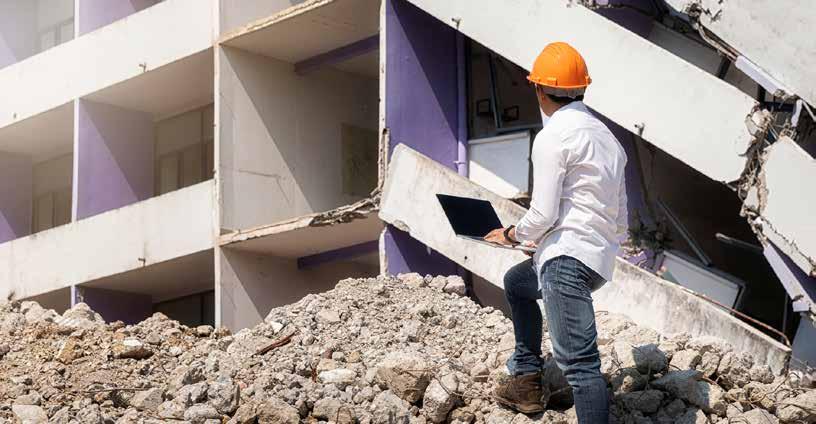WAITING TO EXHALE
New government study explores impact of wildfire smoke on indoor air quality By Greg Nilsson
20 CANADIAN HEALTHCARE FACILITIES
different facilities, an online survey was distributed to healthcare facility management and operations (FMO) staff in Canada’s four westernmost provinces. All respondents indicated that in 45 per cent of cases, wildfire smoke had a prolonged negative impact on IAQ. The average length of a wildfire smoke event during the 2018 season was 30 days; the longest event lasted 60 consecutive days. MITIGATION TECHNOLOGIES
The most common mitigation approach to deal with compromised IAQ was to install
t
E
vidence-based information on indoor air quality ( I AQ ) at Canadian healthcare facilities is lacking and yet it is crucial in helping facility managers make adequate decisions during times when IAQ may be compromised, specifically during wildfire season. To help solve this problem, the National Research Council of Canada’s (NRC) Construction Research Centre launched a project in 2018, to identify the impact wildfire smoke has on healthcare facilities’ IAQ. The NRC’s study began by characterizing outdoor and indoor particle concentrations to establish baselines for technological responses. An advisory committee was formed to enable st a keholder consu lt at ions. Committee members included Health Canada, the Canadian Forest Service, representation from provincial health ministries, emergency management offices and facility maintenance operations from Manitoba, Saskatchewan, Alberta and British Columbia. The committee identif ied a lack of evidence-based direction in how to react to IAQ challenges during wildfire smoke occurrences, given response practices are not systematically reported to allow for the development of generic guidance. With this in mind and to better understand the response practices being used by
filters with higher Minimum Efficiency Reporting Value (MERV) ratings for the outdoor air intakes (91 per cent of respondents). Portable air cleaners were also used by 45 per cent of respondents. Participants stated that for infection control purposes, portable air cleaners were not permitted in sensitive areas as they may disturb air flows intended to minimize infection transmission risks. In 57 per cent of cases, the actions taken did not reduce the number of IAQ complaints received by FMO staff. Sites that used multiple approaches had the best outcome in terms of reported improved IAQ and
Daily averages of PM2.5 monitored during Phase 1, as listed by monitoring location.










